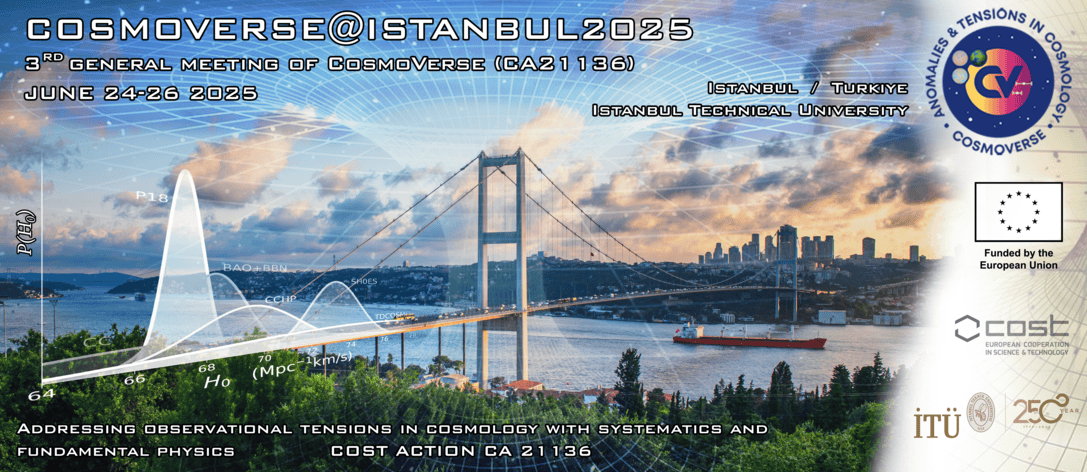Conveners
Afternoon session 2: (Tuesday)
- Mariam Bouhmadi-López (Ikerbasque and University of the Basque Country)
Afternoon session 2: (Wednesday)
- Agnieszka Pollo (Jagiellonian University)
Afternoon session 2: (Thursday)
- Nihan Katırcı (Doğuş University)
I will review what the prospects of quasars in the context of observational cosmology are, and I will present recent measurements of the expansion rate of the Universe based on a Hubble diagram of quasars detected up to the highest redshift ever observed (z~7.5).
The derived distances are in agreement with the standard flat ΛCDM model up to a redshift of ~1.5, but they show significant...
Context. Gamma-ray bursts (GRBs), observed at redshifts as high as 9.4, could serve as valuable probes for investigating the distant Universe. However, this necessitates an increase in the number of GRBs with determined redshifts, as currently, only 12% of GRBs have known redshifts due to observational biases. Aims. We aim to address the shortage of GRBs with measured redshifts, enabling us to...
The well established ΛCDM model of cosmology suffers from several challenges and disparities like the nature of dark matter and dark energy, accelerated expansion of the Universe and tensions in cosmological parameters derived from different observations. Tomographic cross-correlation measurements from the next-generation CMB experiments and galaxy surveys will allow us to robustly quantify...
The cosmic dipole measured in surveys of cosmologically distant sources is generally in disagreement with the kinematic expectation of the Cosmic Microwave Background (CMB). This discrepancy represents severe tension with the Cosmological Principle and challenges the standard model of cosmology. We present a Bayesian analysis that quantifies the tension between datasets used to measure the...
Cosmic voids, the largest observable structures in the Universe and characterized by a scarcity of galaxies, impact the Cosmic Microwave Background (CMB) through gravitational lensing, leaving a negative imprint on the CMB convergence (κ) map. This imprint offers insights into matter distribution within voids and the growth of cosmic structures. Furthermore, voids produce secondary CMB...
We explore an interacting dark sector model in trace-free Einstein gravity where dark energy has a constant equation of state, $w=-1$, and the energy-momentum transfer potential is proportional to the cold dark matter density. Compared to the standard $\Lambda$CDM model, this scenario introduces a single additional dimensionless parameter, $\epsilon$, which determines the amplitude of the...
We investigate a theoretical framework for the Universe dynamics, based on the possible creation of dark energy constituents by the time-varying gravitational field of the expanding Universe. The proposed scenario is compared to specific cases of the reduced Chevallier-Polarski-Linder (CPL) parameterization, with the aim of probing the nature of dark energy.
We construct, from our model and...
In my talk, I will present a model where the Universe is filled with a phantom scalar field with a potential in the form of a hyperbolic tangent, as well as cold dark matter and radiation. This model is free from the shortcomings usually attributed to phantom models and undergoes a rapid Anti-de Sitter to de Sitter transition. At the background level, a detailed analysis of the model is...
Earlier studies investigating the allowed fraction of dark matter as primordial black holes (PBHs) tend to completely rule out PBHs with masses smaller than \~10⁻¹⁵ solar masses. This is due to the lack of evidence for Hawking radiation coming from the final evaporation stages of such small PBHs. These limits, however, make the key assumption that these PBHs can be modelled as uncharged,...

